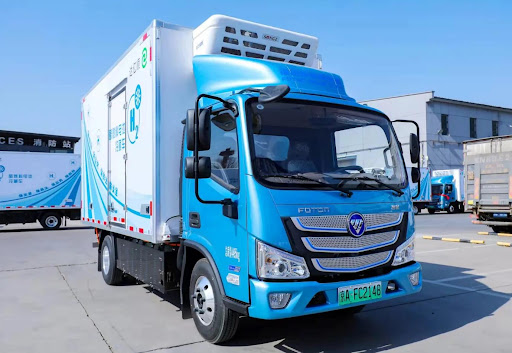The refrigerated vehicle industry is evolving rapidly, driven by technological advancements, environmental concerns, and changing market demands. These vehicles, essential for the transportation of perishable goods, are undergoing significant transformations to become more efficient, sustainable, and adaptable to various logistical challenges. This article explores the latest developments in refrigerated vehicle design, highlighting the innovations shaping the future of this vital sector.
Electrification of refrigerated transport
Electric refrigerated vehicles
The shift towards electric vehicles (evs) is one of the most significant trends in refrigerated transport. Electric refrigerated vehicles offer a cleaner alternative to traditional diesel-powered trucks, significantly reducing emissions. Companies like tesla and rivian are at the forefront of introducing electric models suitable for refrigerated transport.
Hybrid refrigeration systems
Hybrid refrigeration systems, which combine traditional fuel-powered cooling with electrically driven components, are becoming more popular. These systems offer improved fuel efficiency and lower emissions compared to fully diesel-powered units.
Advanced insulation materials
High-efficiency insulation
The use of advanced insulation materials in refrigerated vehicles is improving thermal efficiency. Materials like vacuum insulated panels (vips) and foam insulations are being used to enhance the thermal retention capabilities of the vehicles, thereby reducing energy consumption.
Aerodynamic design
Reducing drag
Manufacturers are focusing on aerodynamic designs to reduce drag and improve fuel efficiency. Features like streamlined body shapes, side skirts, and roof fairings are being incorporated into new models.
Smart technology integration
Iot-enabled vehicles
The integration of the internet of things (iot) in refrigerated vehicles allows for real-time monitoring and control of temperature and humidity levels. Iot devices can provide valuable data to optimize routes, monitor vehicle performance, and ensure the quality of transported goods.
Predictive maintenance
Incorporating predictive maintenance technologies helps in identifying potential issues before they lead to breakdowns, thereby increasing vehicle uptime and efficiency.
Solar power utilization
Solar panels on vehicles
Some refrigerated vehicles are now being fitted with solar panels. These panels can power ancillary systems or even support the refrigeration units, reducing fuel consumption and operational costs.
Enhanced safety features
Advanced driver assistance systems (adas)
New refrigerated vehicles are increasingly equipped with advanced driver assistance systems, including automatic braking, lane-keeping assist, and blind-spot detection, to enhance road safety.
Multi-temperature compartments
Versatile transport solutions
The development of vehicles with multi-temperature compartments allows for the simultaneous transport of goods requiring different temperature settings. This versatility is particularly beneficial for urban deliveries where space and efficiency are crucial.
Environmental compliance
Meeting emission standards
New refrigerated vehicle designs are focusing on meeting stringent environmental regulations, such as euro 6 standards in europe, which set limits on vehicle emissions.
Conclusion
The refrigerated vehicle industry is undergoing a transformation, driven by the need for more environmentally friendly, efficient, and technologically advanced solutions. Electrification, improved insulation, aerodynamic design, smart technology integration, and enhanced safety features are among the key developments in this sector. As demands for sustainable and efficient transportation of perishable goods continue to grow, these innovations are setting new standards in refrigerated vehicle design, ensuring that the industry remains capable of meeting the evolving needs of the global supply chain.





